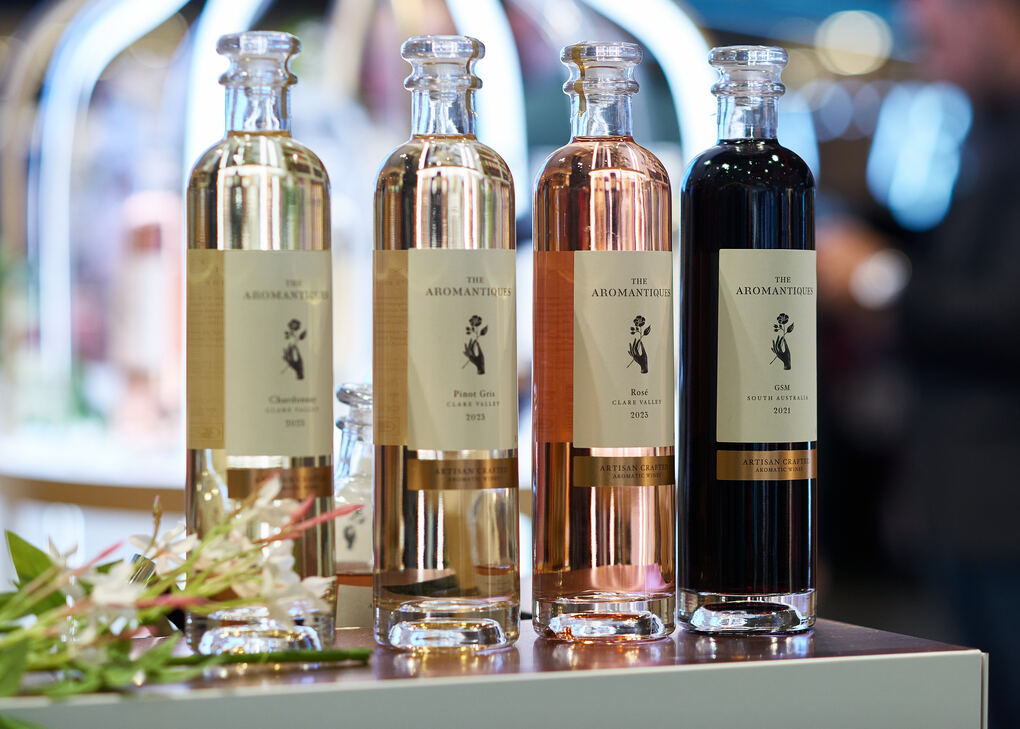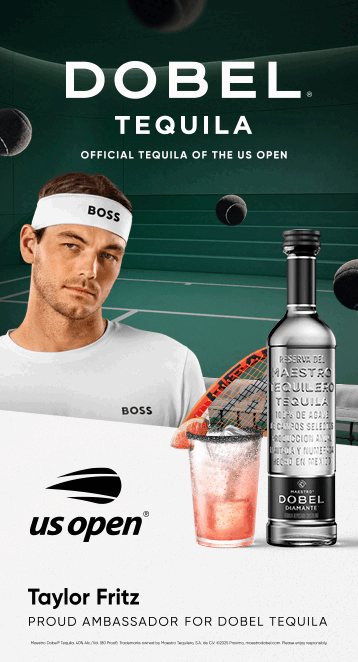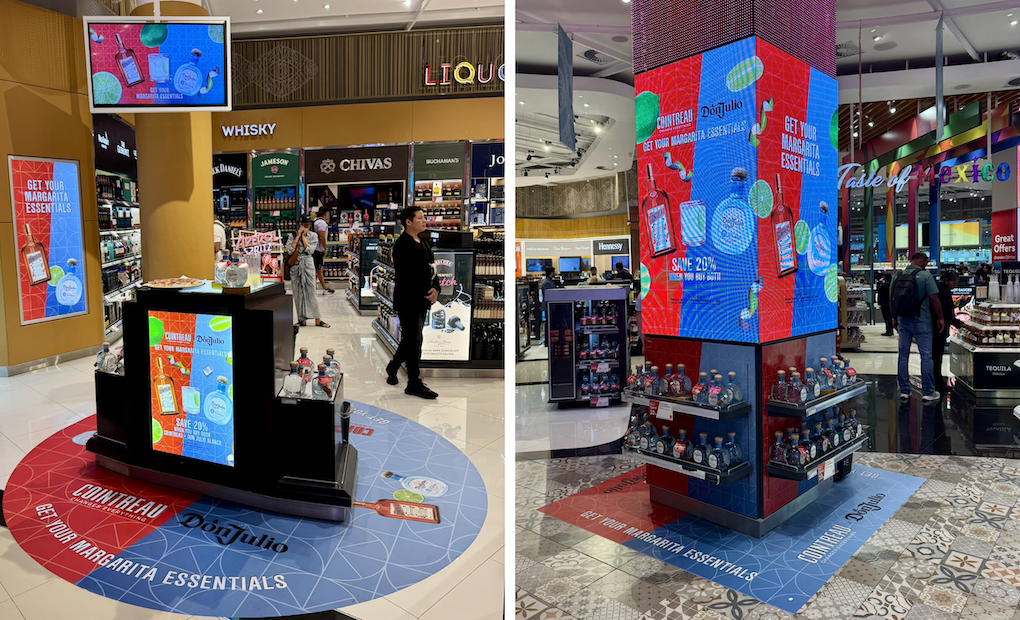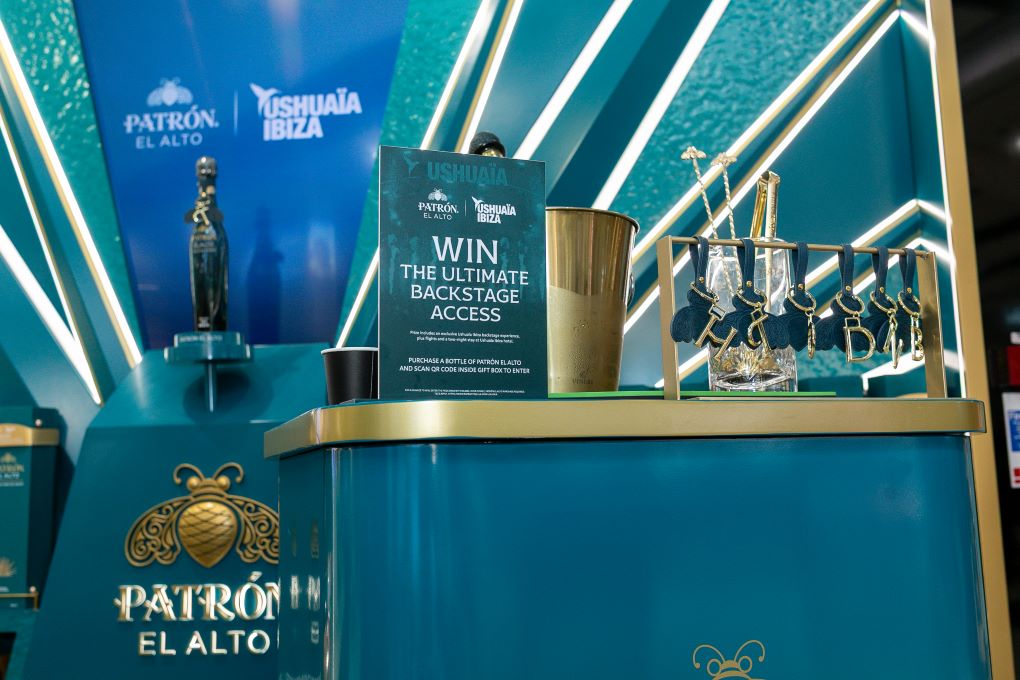Prologue: Earlier this year, renowned South Australian family winery Taylors Wines partnered with Heinemann Oceania to launch The Aromantiques at Sydney Airport.
The collection – which includes Pinot Gris, Chardonnay, Rosé and GSM varietals – offers a key point of difference in its presentation and positioning. By taking design cues from the beauty industry, Taylors is seeking to engage a new generation of wine drinkers wanting style as well as quality.
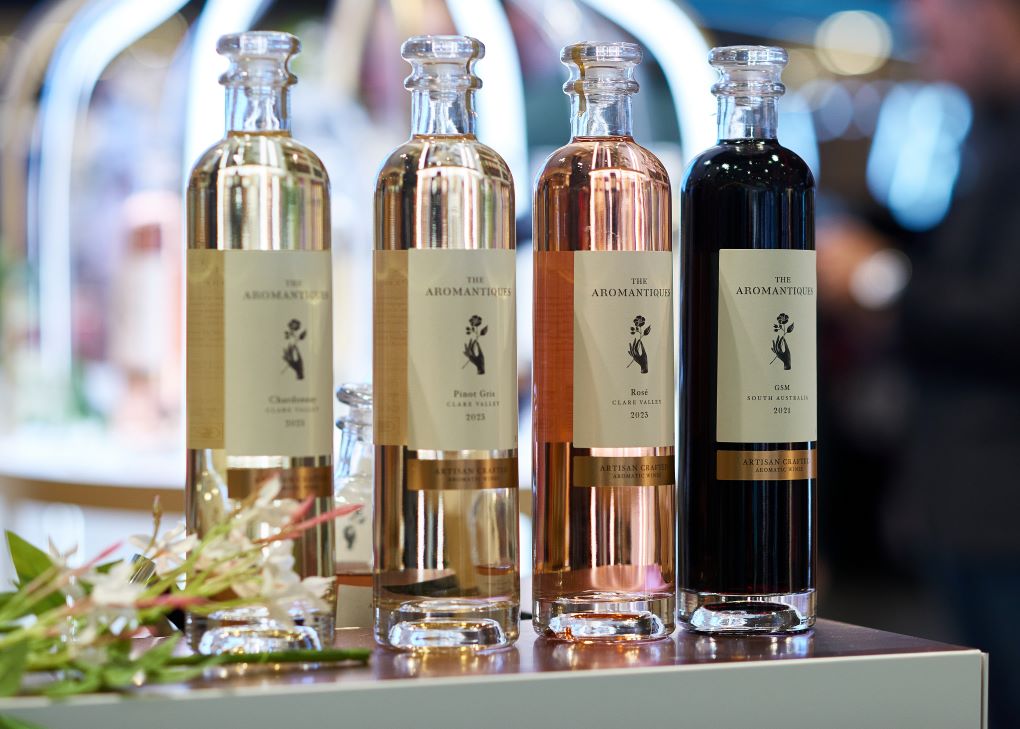
On the eve of the TFWA World Exhibition in Cannes, The Moodie Davitt Report Founder & Chairman and wine aficionado Martin Moodie spoke with Taylors Wines Business Manager – Global Travel Retail Chris Davis about The Aromantiques collection and the company’s approach to the channel in general.
Martin Moodie: Chris, the launch of The Aromantiques is an attempt to attract a new consumer into the wine category with a differentiated offering that appeals to a younger female shopper. What drove that thinking?
Chris Davis: Globally, we’ve noticed that younger consumers are not fully engaged with the wine category, opting instead for a wider variety of beverages than in previous decades.
The Aromantiques was designed to break away from the traditional image of wine and offer a product that speaks directly to the preferences and lifestyle of these shoppers.
By focusing on fresh, aromatic flavour profiles, contemporary packaging, and branding that resonates with younger premium shoppers, we aimed to create a wine that feels modern, sophisticated, approachable, and relevant to their tastes and preferences. Because of that we’re seeing it being purchased for a wider range of occasions.

You recently launched with Heinemann at Sydney Airport. What’s been the reaction? And where next?
The response has been outstanding and not only in Sydney but also in Melbourne, Brisbane, Perth and Cairns International airports.
We’ve received overwhelmingly positive feedback from both consumers and customers, which confirms that our approach in the wine category is hitting the mark.
We’re seeing exceptional repeat purchase rates, a clear indicator that our offering is appealing to its audience. The contemporary styling of our products is also opening doors beyond traditional wine shelves, with opportunities emerging in beauty and fragrance sections.
Our experience in Sydney, and in travel retail more broadly has inspired us to pursue further expansion across key travel retail hubs globally.

Next, we’re focused on expanding our reach into strategic locations in Asia such as Bangkok, Singapore and other major airports where we see a strong opportunity such as Dubai Duty Free.
Our aim is to replicate this success on a global scale, ensuring our brand continues to thrive in markets that value innovation and premium experiences.
Let’s talk about the presentation – I understand you took your cues from the beauty sector. Talk us through how you set about the task.
We recognised that the beauty and fragrance sector excels at creating a strong emotional connection with consumers through its use of packaging design, engaging storytelling, and aspirational branding.
We wanted to bring that same level of sophistication and allure to The Aromantiques.

Our packaging design uses the semiotics of luxury fragrance packaging to highlight the fresh aromatic appeal of these wines.
We also paid close attention to the full sensory experience, from our experiential marketing activations and tactile feel of the packaging to the aroma of the wine itself, ensuring that every touchpoint reflects the premium and refined nature of the brand.
How do you assess the travel retail market in general – at home and abroad? I recall Taylors being integral to Australia’s First Families of Wine project back in 2012 with The Nuance Group at Sydney Airport. Wine has come a long way since but I believe it’s still hit and miss in travel retail globally. What’s the state of the nation with the category in your view?
The travel retail market for wine has certainly evolved since 2012.
Domestically, we’ve seen a strong recovery in passenger numbers and with this has come good growth in the wine category. There is a growing interest in premium and unique wines among travellers, particularly in Asia.

This has created significant opportunities for brands that can offer something distinct and memorable. To capitalise on the potential in the travel retail wine market, the industry should focus on creating more immersive experiences, enhancing consumer education, and forming strategic partnerships to integrate wine into the travel lifestyle, while also offering exclusive products tailored to regional preferences.
These strategies are essential for engaging today’s travellers and driving sustained growth in the global market.
What do you see as the greatest sector opportunity?
The biggest opportunity lies in evolving the image of the wine category and certainly the continued premiumisation of wine and the growing consumer interest in sustainability and authenticity.
Consumers, especially younger ones, are increasingly looking for products that tell a story and align with their values. There’s a huge opportunity to cater to this by offering wines that emphasise their origin, craftsmanship, and sustainability credentials.
At Taylors/Wakefield Wines we are very focused on sustainability and were the first independent Australian winery to sign up to a science-based target that will see us reduce our emissions in line with the Paris Agreement. By focusing on these aspects, our industries can align with the movement towards conscious consumption and attract a new wave of consumers.
And your biggest challenge and bugbear?
The biggest challenge is breaking through some of the traditional perceptions of wine.
Many consumers still see wine as a complex, intimidating product that requires a certain level of knowledge to enjoy. This perception can be a barrier to entry for potential new consumers, particularly younger ones.
Our challenge is to make the wine-buying experience more engaging, make it more accessible without compromising on quality or authenticity.
One of my biggest bugbears is the limited innovation within the wine industry. Compared to other beverage categories, wine has been somewhat resistant to change, often choosing tradition over evolution and relevance.
We believe that respecting tradition is very important, however, it’s equally important to adapt and respond to changing consumer behaviours and preferences. There’s so much potential for creativity and innovation in wine, and I’d like to see our industry embrace that more fully.
If you had to single out a success, what would it be?
It has been the consistent recognition we’ve received in international wine shows for the quality of our wines.
Taylors/Wakefield benchmarks itself against the best wines the world has to offer in prestigious global wine competitions. Taylors/Wakefield continues to win accolades which affirm our commitment to excellence in winemaking.
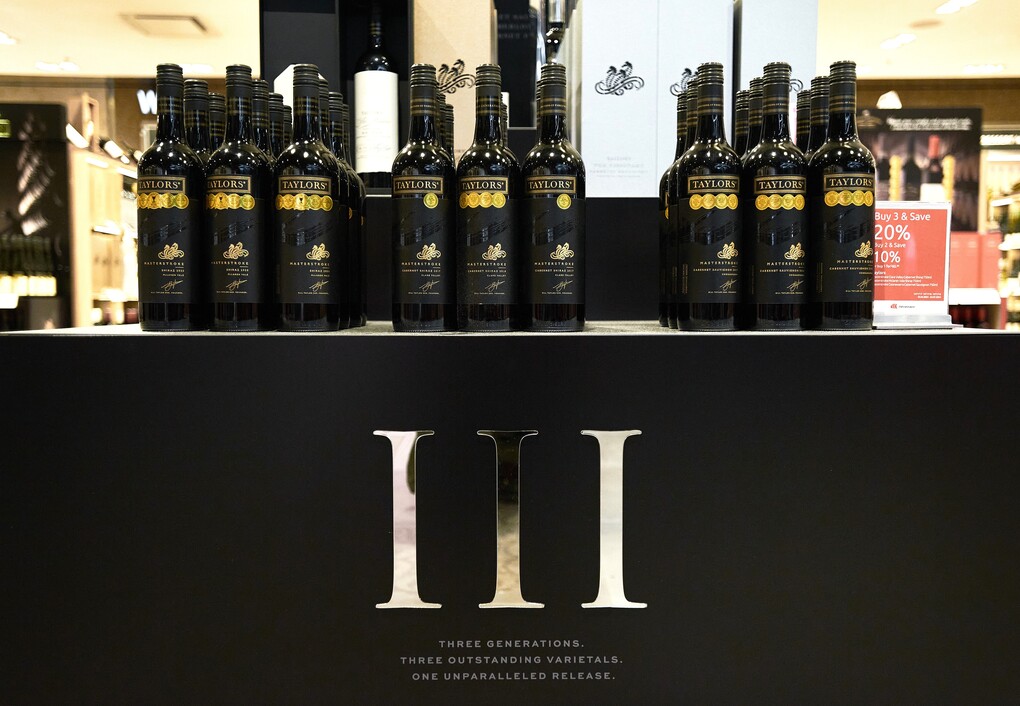
This international acclaim not only highlights the skill and dedication of our team but also reinforces our founding vision to produce world-class wines that stand proudly on the global stage.
These successes have bolstered our reputation and have helped us expand our footprint in key markets worldwide.
Where is Taylors’ thrust in terms of travel retail and does this follow your domestic strategy?
In terms of travel retail, our focus is on expanding our presence in key global markets where we see the most alignment with our brand and product offerings.

This includes major international airports in Asia Pacific, Europe, and the Middle East, where there is a strong demand for premium and unique wines. We see travel retail as an excellent partner to create memorable wine experiences and tell the story of our premium wines.
A similar question but this time in terms of price-point. Where are you putting most emphasis in travel retail?
The founding vision of our family winery was to make wines that stand proudly against the world’s best. Our performance in international wine competitions show that we are honouring that mission.
We’re focused on premium and above price segments. We believe that these segments align best with our winery’s strengths and offer the best opportunity for growth, particularly in the travel retail market where consumers are often looking for something special, whether as a gift or a personal indulgence.
By concentrating on these higher price points, we’re able to offer wines that reflect the quality and craftsmanship that discerning consumers are seeking.
This interview will be read in the run-up to Cannes and The Trinity Forum. Any final message to retailers?
As we approach Cannes and The Trinity Forum, I’d like to encourage retailers to think differently about wine. The category has so much potential to be more than just another product on the shelf – it can be a key driver of growth and consumer engagement.
By focusing on innovation, storytelling, and creating memorable experiences, we can elevate wine’s presence in the travel retail space and tap into a new generation of wine lovers. Let’s work together to bring wine into the spotlight it deserves. ✈




